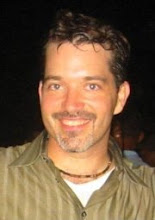July 8, 2010
Glimpses of Cuba and Its Paradoxes
By SYLVIANE GOLD
After half a century of distrust and outright enmity, Cuba and the United States are separated by perhaps the widest 90 miles on earth. Our near-but-far, far-but-near relationship comes through repeatedly in the striking paintings, photographs and sculptures that make up "Cuba Avant-Garde," the new show at the Katonah Museum of Art.
Subtitled "Contemporary Cuban Art From the Farber Collection," this lively, wide-ranging exhibition bristles with artistic energy and cultural contradictions.
Equally exposed to the iconography of the Soviet Union and the United States, Cuban artists borrow freely from both. Eduardo Ponjuán González and René Francisco Rodríguez Hérnandez, who work in tandem as Ponjuán-René Francisco, illustrate this tension in "Outside Cuba Inside," a 1993 oil painting that juxtaposes bright propaganda images from Russia (a cheery peasant woman from a Malevich painting) and America (Norman Rockwell's Rosie the Riveter), with Cuba symbolically caught in the middle.
Irony would seem to be a birthright for artists who, steeped in a communitarian island culture, have become global art celebrities. On the one hand, they live under a repressive Communist dictatorship see the images Ángel Delgado inked onto handkerchiefs in the 1990s, after being jailed for a scatological work of performance art. On the other, they currently operate in a kind of alternate economy, free to earn dollars by selling their work abroad.
The pieces in "Cuba Avant-Garde" were made between 1983 and 2004, a period of ferment not just in Cuban art but in Cuba. The flowering of an avant-garde scene in the early '80s was followed by the "special period," the economic crisis and crackdown resulting from the collapse of the Soviet Union in 1989. Many artists fled; many artists stayed. In both cases, the work in this show often reflects an almost obsessive investigation into what the exhibition catalog calls "Cubanidad."
Evidence of Cuba's folk art traditions can be seen in the simple forms, basic colors and rural subject matter of Manuel Mendive Hoyo's "The Sons of Water, Talking to a Fish" ("Los Hijos del Agua, Conversando con un Pez"), a 2001 sculpture whose charmingly polka-dotted fisherman and huge open-mouthed fish commune in a small boat atop a rippling blue sea. For an American, it calls to mind Ernest Hemingway's Cuba-set novella "The Old Man and the Sea," but in fact the work references the animism of an African-based religion to which Mr. Mendive adheres.
Fernando Rodríguez Falcón taps into the same traditions and naïve style, but to more mordant and ironic ends. In "Nuptial Dream" ("Sueño Nupcial"), his 1994 series of carved and painted wood panels, a young Fidel Castro marries Our Lady of Charity of El Cobre, Cuba's patron saint. But the wedding is presented not as fact or myth but as the dream of Mr. Rodriguez's alter ego, a blind Cuban peasant who, like Mr. Mendive, lived through Mr. Castro's revolution. To Mr. Rodriguez, born in 1970, the revolution is ancient history, subject to re-evaluation.
Whatever their personal politics, both Mr. Rodriguez and Mr. Mendive have remained in Cuba. But their expatriate counterparts those taken out of the country as children and those living abroad by choice seem no less preoccupied with their homeland.
"The Raft" ("La Patera," 2002), the show's emblematic work, reproduced on the catalog cover and on the Web, is a large-format watercolor by Armando Mariño, who lives in Spain. Its red-and-white 1950s American auto body the kind that provided Havana with its taxi fleet is supported not by four wheels but by a crowded mass of barefoot legs. The image functions as both comedy and tragedy, offering homage to the Cuban population's resilience in the face of scarcity and sardonic comment on the dilapidated state of the country.
In his cryptic painting "The Island Waits for a Signal" ("La Isla Esperando una Señal," 2002), another exile, José Braulio Bedia Valdés, conflates the image of a rocky island with that of a man's head looking toward an onrushing ball of light. And Rubén Torres Llorca reflects on the dispersal of his generation of artists in the haunting "What We Were Then, We Are No Longer" ("Nosotros los de Entonces, Ya No Somos los Mismos," 1987), a mixed-media collage anchored by a 1981 photograph of artists, Mr. Torres included, who had shown their work in the seminal Havana exhibition "Volumen I."
The Katonah exhibition, which originated at the Samuel P. Harn Museum at the University of Florida in Gainesville, also includes work that at first appears to have no specifically Cuban content, like Belkis Ayón Manso's richly textured, semiabstract 1996 collograph, "Untitled No. 3" ("Sin Título Número 3").
A closer look at the label shows that Ms. Ayón, who committed suicide in 1999, was inserting a female form into imagery representing Abakuá, a secret, all-male society that dates to colonial times, when it came to Cuba from West Africa. With its sheer beauty, the print dispels the distance between the viewer and the artist; with its hidden meaning, undecipherable to an American, it makes 90 miles seem unbridgeable.
"Cuba Avant-Garde: Contemporary Cuban Art From the Farber Collection," Katonah Museum of Art, 134 Jay Street (Rte. 22), Katonah, through Sept. 19.
Information: katonahmuseum.org or(914) 232-9555, extension 0.
Sent via BlackBerry from T-Mobile






No comments:
Post a Comment